Infinity
Species: Capsicum chinense | Origin: UK | Pungency: Super Hot
Infinity, also known as '7-Pot Infinity', is the result of an accidental cross that took place between two Capsicum chinense varieties in a polytunnel in Grantham, Lincolnshire, England. Nick Woods of Firefoods, who was already growing five or six of the world's hottest chillies, discovered the plant growing in the corner of his polytunnel. For two weeks in February 2011 it held the Guinness World Record title for world's hottest chilli with a Scoville scale rating of 1,067,286 Scoville Heat Units (SHU). It was replaced shortly afterwards by the Naga Viper, developed by chilli farmer Gerald Fowler of the Chilli Pepper Company, which had a Scoville scale rating of 1,382,118 SHU. The Naga Viper is said to be a three-way hybrid produced from the Naga Morich, Bhut Jolokia (Ghost Pepper) and Trinidad Scorpion.
The plants typically grow to about four feet in height and produce very good yields of squat, wrinkled, Scotch Bonnet-shaped chillies which start lime green and ripen through orange and then to fiery red. About two weeks before the ripening process begins they turn a darker shade of green and the average chilli grows to about golf ball size and has the typical pimply skin texture (rough exocarp) that one would expect from a superhot variety. Infinity chillies have a very strong citrus-like aroma and a very strong fruity flavour and are great for spicing up whole cows and making homemade pepper spray. Some chilli growers believe that the Infinity chilli is the Trinidad Moruga Scorpion with a different name. Having grown both varieties side-by-side the only two differences I noticed were that the Infinity chillies were slightly larger and had a more consistent shape. Apart from that, the growth habit of the plants was the same and the time in which it took each one to start flowering, setting fruit and producing ripe fruit was the same.
The Bindi Indian restaurant in Grantham, England, served a curry which they aptly named 'the widower'. Made using 20 whole Infinity chillies, it was so insanely hot that chefs had to wear face masks and goggles when preparing it. More than three hundred people attempted to eat the curry before consultant radiologist Ian Rothwell became the first person to finish the dish, taking just over one hour to do so. Dr. Rothwell said that completing the challenge was harder than when he'd climbed Mount Kilimanjaro the previous year.
Page published on: 24th December 2021
Infinity, also known as '7-Pot Infinity', is the result of an accidental cross that took place between two Capsicum chinense varieties in a polytunnel in Grantham, Lincolnshire, England. Nick Woods of Firefoods, who was already growing five or six of the world's hottest chillies, discovered the plant growing in the corner of his polytunnel. For two weeks in February 2011 it held the Guinness World Record title for world's hottest chilli with a Scoville scale rating of 1,067,286 Scoville Heat Units (SHU). It was replaced shortly afterwards by the Naga Viper, developed by chilli farmer Gerald Fowler of the Chilli Pepper Company, which had a Scoville scale rating of 1,382,118 SHU. The Naga Viper is said to be a three-way hybrid produced from the Naga Morich, Bhut Jolokia (Ghost Pepper) and Trinidad Scorpion.
The plants typically grow to about four feet in height and produce very good yields of squat, wrinkled, Scotch Bonnet-shaped chillies which start lime green and ripen through orange and then to fiery red. About two weeks before the ripening process begins they turn a darker shade of green and the average chilli grows to about golf ball size and has the typical pimply skin texture (rough exocarp) that one would expect from a superhot variety. Infinity chillies have a very strong citrus-like aroma and a very strong fruity flavour and are great for spicing up whole cows and making homemade pepper spray. Some chilli growers believe that the Infinity chilli is the Trinidad Moruga Scorpion with a different name. Having grown both varieties side-by-side the only two differences I noticed were that the Infinity chillies were slightly larger and had a more consistent shape. Apart from that, the growth habit of the plants was the same and the time in which it took each one to start flowering, setting fruit and producing ripe fruit was the same.
The Bindi Indian restaurant in Grantham, England, served a curry which they aptly named 'the widower'. Made using 20 whole Infinity chillies, it was so insanely hot that chefs had to wear face masks and goggles when preparing it. More than three hundred people attempted to eat the curry before consultant radiologist Ian Rothwell became the first person to finish the dish, taking just over one hour to do so. Dr. Rothwell said that completing the challenge was harder than when he'd climbed Mount Kilimanjaro the previous year.
Page published on: 24th December 2021
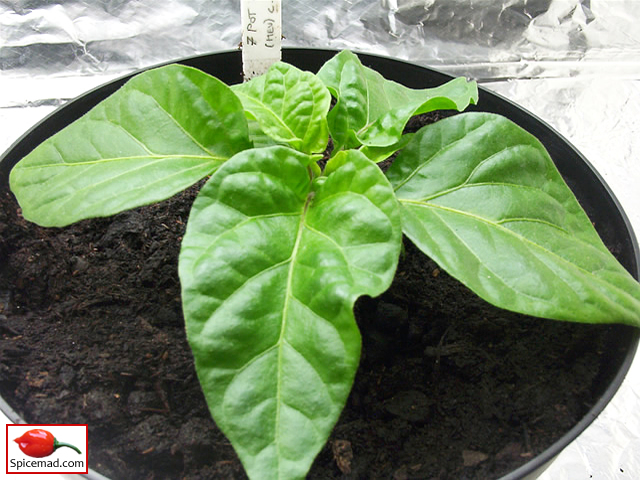 |
| Infinity - 23rd February 2012 |
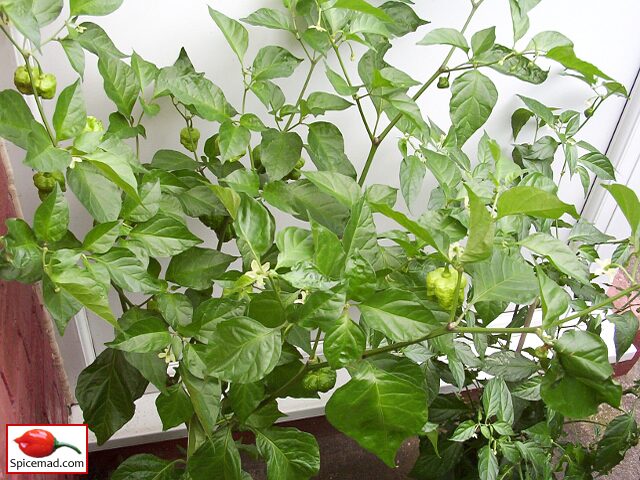 |
| Infinity - 27th July 2012 |
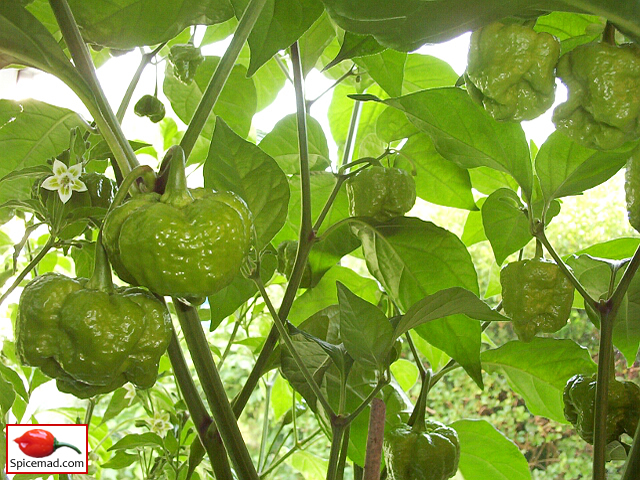 |
| Infinity - 21st July 2012 |
 |
| Infinity - 15th July 2012 |
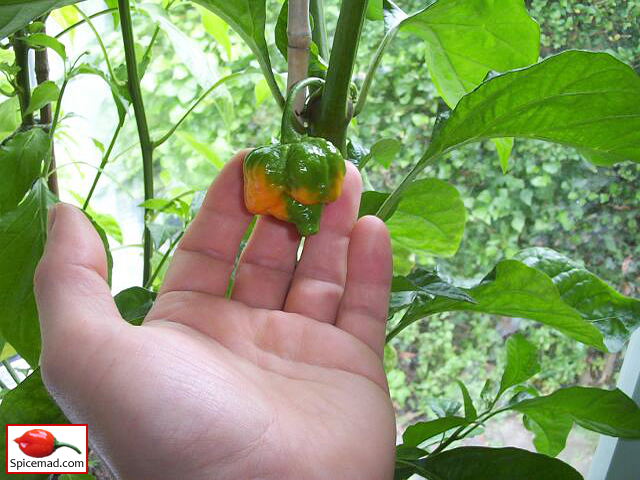 |
| Infinity - 15th July 2012 |
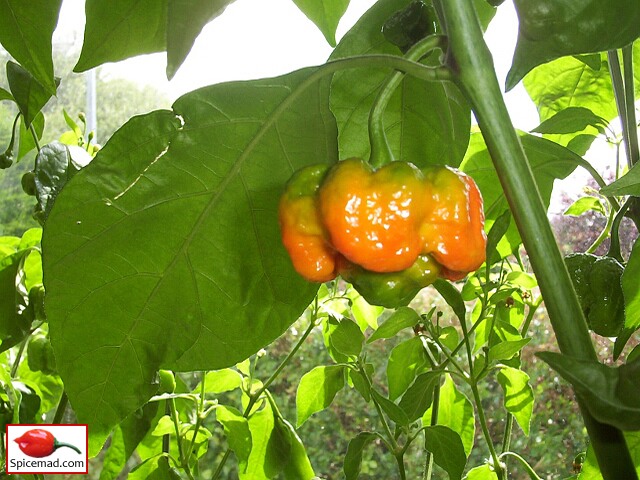 |
| Infinity - 1st August 2012 |
 |
| Infinity - 3rd August 2012 |
 |
| Infinity - 21st July 2012 |
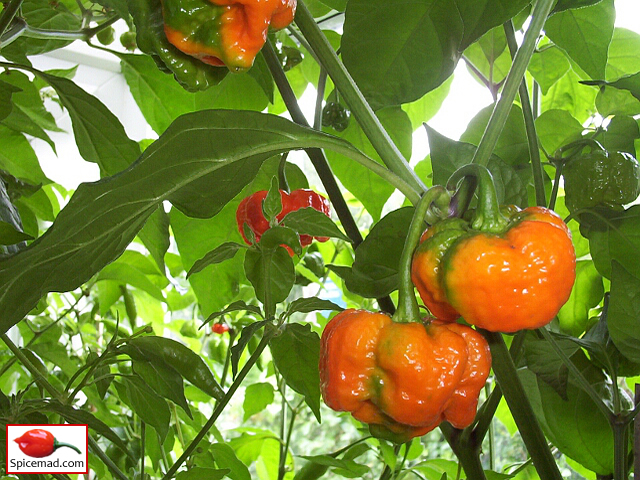 |
| Infinity - 3rd August 2012 |
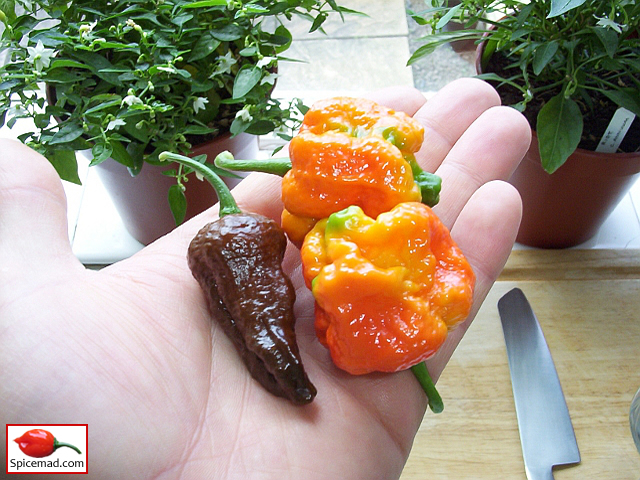 |
| Infinity (right) and Chocolate Bhut Jolokia - 4th September 2012 |
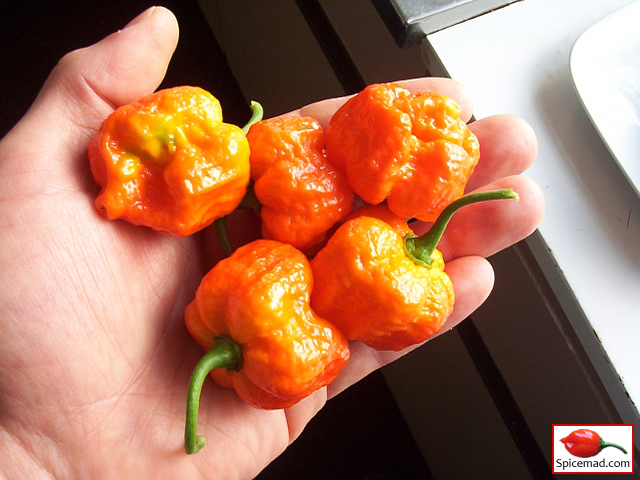 |
| Infinity - 5th August 2012 |
